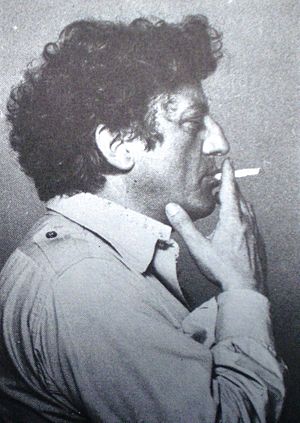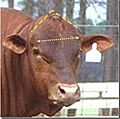Rómulo Macció facts for kids
Romulo Macció (born 1931, died March 11, 2016) was a talented painter from Argentina. He was known for being part of a cool art movement called Nueva Figuración. This group created a new kind of art that showed real-life figures in fresh ways. They wanted to challenge old ideas about art. Macció and his friends used their art to talk about important issues in Argentina and across Latin America. Even after leaving the Nueva Figuración group, Macció kept making art that showed his rebellious style. His paintings often focused on social problems. He won the important Konex Award in Argentina three times: in 1982, 1992, and 2002.
Contents
Early Life and Art Journey
Romulo Macció grew up in Buenos Aires, Argentina. His dad owned a factory, and his mom was a homemaker whom he really looked up to. Romulo loved drawing from a young age. He taught himself how to draw and paint. When he was just 14, he got a job as a graphic designer. This job in advertising lasted for over ten years. His ads were very creative and often talked about current events. Even when he became a painter, his graphic design skills influenced his artwork.
Macció's art started getting noticed. He had his first art show in Buenos Aires in 1956. His early works showed influences from Surrealism, an art style that explores dreams and imagination. After trying out surrealism, he briefly experimented with abstract art. This was a unique style for Argentina at the time. Soon after, his art became more expressive, focusing on strong feelings and gestures.
Joining Art Groups
Macció's abstract art caught the eye of important people, including architect Clorindo Testa. He joined a group called Boa. This group was part of a bigger surrealist movement from Paris. The Boa group even published a magazine. Macció helped design the magazine and his paintings were featured in it.
Art Inspired by Life
Macció's art was deeply influenced by social issues in Argentina. This was true for both his paintings and his advertisements. For example, in 1959, he created an ad to respond to Argentina's economic problems. The country was facing high inflation. His ad suggested using "simple solutions" for tough situations. He got this idea from his mother, who was great at using everything they had at home. Macció wanted people to find simple ways to deal with their problems.
A common feature in his art was a central head figure. You could see this in ads and paintings like "Cabeza" (which means "Head"). Macció used bold colors and graphic designs to paint heads or human figures in abstract settings. Sometimes he painted figures in pieces. Later, in 1977, he started painting them as if they were just beginning to form.
Macció also learned a lot by reading art magazines. He found them at the French Library with a friend. These magazines taught him about styles like Abstract Expressionism. He also visited art shows to see international art from famous artists. In one of his own shows, called "Fictions," he shared how Argentine writer Jorge Luis Borges influenced him. During these years, he painted in a spontaneous, expressive style.
Awards and New Movements
Macció's art earned him several awards. He won the De Ridder Prize in 1959 and the Torcuato di Tella Institute International Prize in 1962. His growing fame brought him closer to other leading Argentine artists, like Luis Felipe Noé. Macció and Noé were key figures in starting the Nueva Figuración movement. This art style became very popular in Latin American art during the 1960s. In 1964, Macció also received the Guggenheim International Prize in New York. He continued to work on advertisements for big companies like Grant and J. Walter Thompson.
Macció encouraged his art group members to see an exhibition by Ernesto Deira in 1960. Soon after, Deira joined Nueva Figuración as their fourth member. Macció saw Deira as a very energetic artist. Macció was always open to new art styles and people. This helped him grow his own art even after Nueva Figuración went their separate ways in 1965.
Macció called himself a rebel against traditional art styles. He once described polite portrait and landscape art as "pink chocolate." His own art often showed sad or struggling figures. These figures were usually set against backgrounds that looked like polluted cities or decaying places. In his later years, his work continued to focus on social problems.
Legacy and Exhibitions
Romulo Macció's artwork is still shown in galleries in Argentina and Europe. Since 1969, eight art books have been published about his work. Many of his paintings are part of the permanent collections at important museums. These include the National Museum of Fine Arts in Buenos Aires, the Blanton Museum of Art, and the Hirshhorn Museum and Sculpture Garden in Washington, D.C..
Critics from around the world praised Macció's art. In 1969, a review in The New York Times said his talent was strong enough to compete with artists anywhere. The reviewer also noted how Macció combined different art styles in his work.
Romulo Macció passed away on March 11, 2016, at the age of 84.
Images for kids
See also
 In Spanish: Rómulo Macció para niños
In Spanish: Rómulo Macció para niños



